
Eco Wave Power: Changing the World One Wave at a Time
By Catherine Jewell, Information and Digital Outreach Division, WIPO
Amid growing climate concerns and energy price hikes, there is growing interest in renewables to meet out energy needs. A pioneering technology developed by Israeli company, Eco Wave Power, which harnesses the power of the waves to generate electricity, offers a promising new source of affordable, clean energy. Inna Braverman, co-founder and CEO of Eco Wave Power and a leading expert in renewable energy is committed to changing “the world one wave at a time.” Braverman explains how Eco Wave Power’s solution works where others have failed. She discusses the critical importance of intellectual property to the company and for World Intellectual Property Day 2023, she encourages women to believe in themselves and to pursue their ambitions.
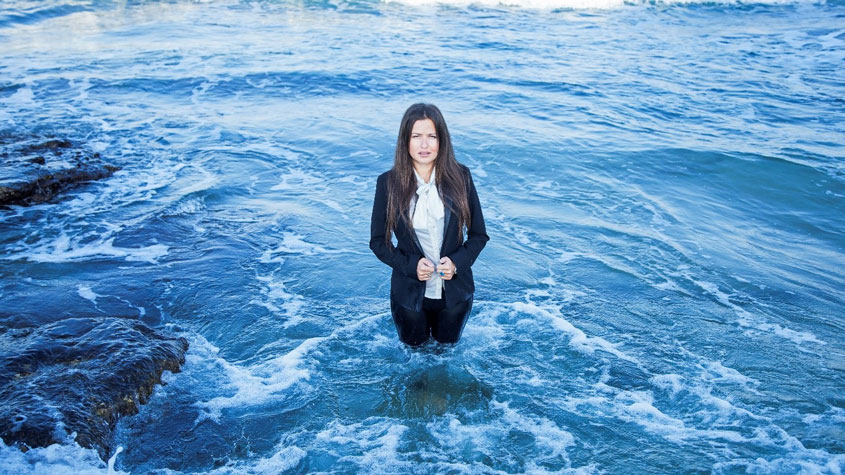
How did you get into renewables?
I have a unique personal story. I am an Israeli citizen and live in Israel, but was born in Ukraine in 1986, just after the Chernobyl nuclear reactor exploded. I was one of the babies hurt by the pollution. I stopped breathing and suffered a clinical death. Fortunately, my mother, a nurse, saw that I wasn't breathing and resuscitated me. She saved my life. Growing up, my family always told me I had a second chance at life. That made me realize I had to do something meaningful and make an impact. When I discovered renewable energy, it was the obvious direction for me.
Why wave energy?
Wave energy can really change the world. As the least intermittent source of renewable energy, it can help make wind and solar power more stable. Also, two-thirds of the world's population live within 200 kilometers of the coast. According to the World Energy Council, wave energy can supply at least twice the amount of electricity the world currently produces. Policymakers really need to take wave energy seriously to meet their 2050 net-zero carbon commitments.
Wave energy can really change the world.
What prompted you to setup Eco Wave Power
I guess it was a combination of my personal story, wanting to make difference and the fact that, while the scientists believed in the huge potential of wave energy, nobody had succeeded in turning it into a commercially viable operation. I established the company in 2011. I was 24, and unlike the big companies that had been exploring wave energy, I had no money, and no technical experience or contacts, but that didn't stop me. Where those companies had failed, I believed I could succeed.
What's Eco Wave Power's mission?
Our mission is to change the world one wave at a time, by developing commercially viable wave energy technology and ensuring its widespread use. With rising seawater levels and increasingly violent storms, many new breakwaters are being built around the world to defend coastal communities. In the short term, I want to see wave energy technology installed on all suitable man-made marine structures (e.g. jetties, breakwaters, piers) and for it to be integrated by law into the planning and design of all new marine structures. With our technology, we can turn these structures into clean energy sources.
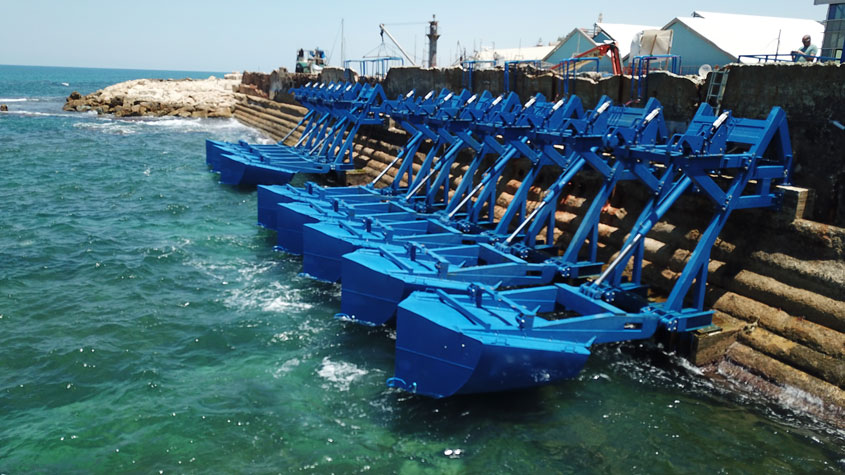
How long did it take to develop this technology?
Work began in 2011, and it took around 12 years to bring our technology to market. We started testing in real conditions early on and that really helped advance deployment. We started by implementing an off-grid power station in the Israeli port of Jaffa. It has since become Israel’s first grid-connected wave power station.
What’s the energy generating capacity of your technology?
It depends on the site. Wave energy generation capacity depends on the height and frequency of the waves - the higher and more frequent the waves, the more energy produced. The number of floaters in operation is another important factor. In general, wave energy doesn’t require a lot of space. On a 20m2 site, a wave energy power installation can generate 100 KWs, or 50 times more energy than a solar facility of the same size, which can only generate 2 KWs of energy.
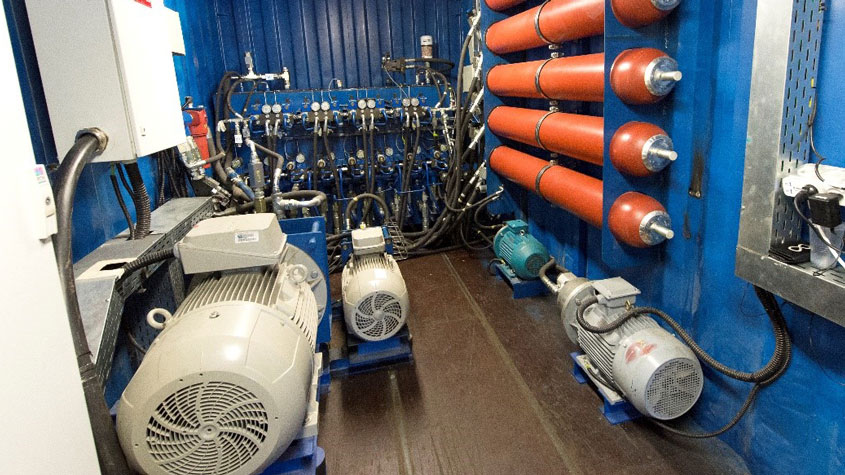
Tell us about the installations you have built.
We built our first grid-connected power station in Gibraltar with funding from the European Regional Development Fund. Over six years, this 100 KW pilot demonstrated that wave energy can safely connect to the grid. We’re currently developing our second grid-connected power station in Jaffa Port, in collaboration with the Israeli Ministry of Energy and EDF Renewables. And last year we signed an agreement with AltaSea to install a wave energy power station in the Port of Los Angeles, USA. Our project pipeline currently includes projects to generate more than 400 MWs of wave energy.
What are the key barriers to scaling wave energy?
There are no huge technological challenges. Our technology is simple, smart and modular. No matter how big the power station is, the technology doesn’t change. You simply need access to a wavy body of water and floaters in place. The more complex and expensive conversion machinery is located on land.
Our biggest challenge is that wave energy is relatively new and very few countries have policies,[…] in place to enable its use.
Our biggest challenge is that wave energy is relatively new and very few countries have policies, legal frameworks, licensing procedures, feed-in tariffs and so on, in place to enable its use. Securing debt financing to implement projects is also a big challenge at the moment, because of the novelty of wave energy. The cheapest and fastest way to build wave energy capacity and to sell electricity to the grid is through debt financing. That’s why it’s important that debt financing becomes available for wave energy under the same terms as for wind and solar energy. I’m optimistic these challenges will be addressed just as they were with solar and wind energy.
Eco Wave Power has won various prestigious awards. How do they support your goals?
These awards expand recognition of Eco Wave Power and our technology and the media buzz around them means more people hear about how good wave energy is.
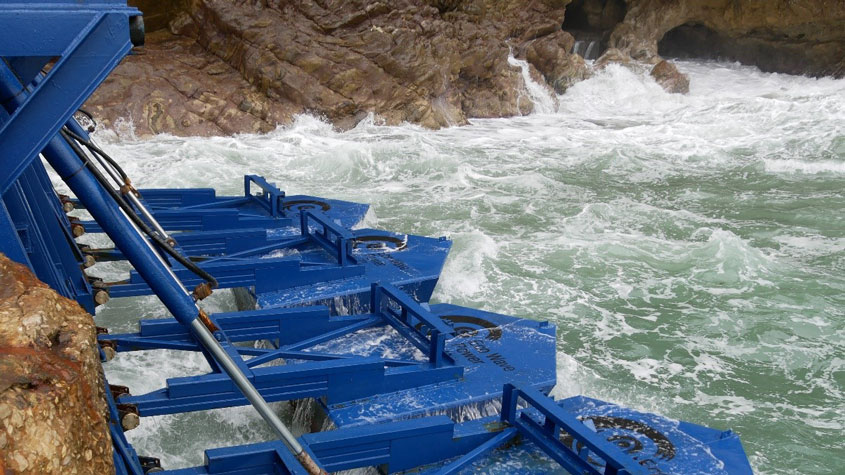
What advantages does your onshore approach have over offshore installations?
Ninety-nine percent of our competition decided to go offshore. We think that was a mistake. Offshore waves can be up to 20 meters high. No man-made equipment can withstand the load that comes with waves that big. These offshore installations are difficult to build, difficult to connect to the grid and they are costly to maintain. That makes them high risk, expensive and difficult to insure. Installation offshore also creates a new presence on the ocean floor, which becomes a potential disturbance to marine life.
However, by building onshore or nearshore using existing marine structures, Eco Wave Power makes wave energy cost-efficient, reliable, insurable, and environmentally friendly. The only thing we put in the water are the floaters, everything else is on land. This enables us to deliver a highly reliable system that also reinforces coastal defenses. We're fully insured by reputable global insurance companies and we're 100 percent environmentally friendly, because we don't connect to the seabed.
How does the system work?
We connect custom-made floaters to manmade marine structures. As the floaters move up and down with the movement of the waves, they compress and decompress hydraulic pistons, which push biodegradable hydraulic fluid into on-shore accumulators. Pressure builds in the accumulator, which turns the hydraulic motor that powers the generator and sends clean electricity to the grid via an inverter. The hydraulic fluid then flows back into a hydraulic fluid tank for re-use. The technology is fitted with sensors and when waves become too high, the floaters lift out of the water automatically and stay in an upward position until the storm passes. The system can generate electricity from wave heights of 0.5 meter.
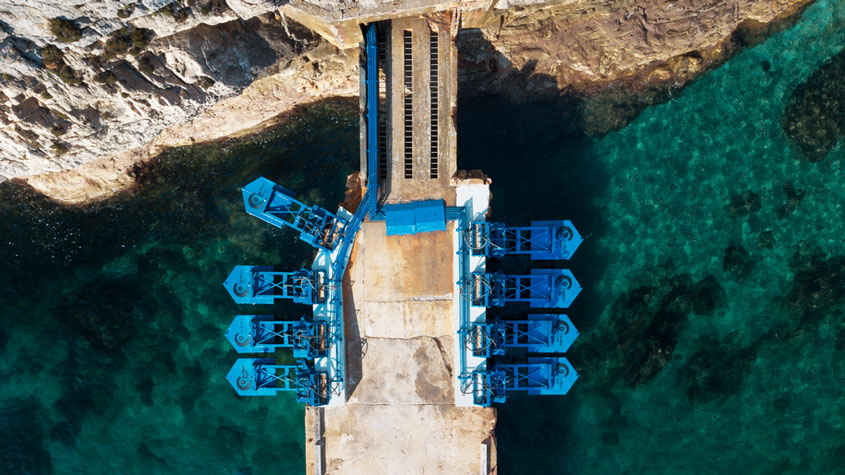
Tell us about your business model.
Our business model is to build, own and operate wave energy power stations and to generate revenue by selling the wave-generated electricity to the grid for 25 years - the expected lifespan of our systems.
What is the process of setting up a wave energy power station?
You start with signing a concession agreement with the port authority or owner of the project site to secure the right to use the marine structure for a 25-year period. Then we do a feasibility study. If that is positive, we move to the design phase. Construction, operation and maintenance of the power station follow.
Are partnerships important for the company?
Our strategic partnerships are very important to us. For example, EDF Renewables IL is an important strategic partner for our Jaffa Port project in Israel. As the leading solar energy provider in Israel, they have significant experience, contacts, knowledge and know-how in the renewable energy space, especially for connecting power stations to the grid. Such partnerships help us technologically and can shorten licensing, grid-collection processes and so on.
What role does intellectual property play in your business?
Intellectual property (IP) is very important to us. We’re a company in a new market with pioneering wave energy technology that no other company has executed before, so we definitely want to protect our technology with solid IP rights. That’s what differentiates us from our competitors. We have a carefully managed patent portfolio, which includes 17 patents (12 granted patents) and patents pending.
Having a solid patent portfolio is essential for a technology company like Eco Wave Power.
IP is a core consideration for investors. The more protection we have, the more value investors will see in investing in the company. Without IP rights, what is stopping another company from developing the same technology? Having a solid patent portfolio is essential for a technology company like Eco Wave Power.
What for you were the advantages of the Patent Cooperation Treaty (PCT)?
When you start a company and aren’t sure which markets you’re going to operate in, the PCT is a good choice. It bought us the time we needed to decide where we were going to secure patent protection and saved us time and money. The international search report that you get when you file an international patent application was also very useful.
Tell us about your own entrepreneurial journey as a woman.
Being an entrepreneur is hard. There are many ups and downs. Being a female entrepreneur adds another layer of difficulty, especially in a very male-dominated sector like energy, where very few women hold executive positions. When I started Eco Wave Power, every time I went into a conference room to present our exciting technology all the men started ordering drinks. They saw a woman and assumed I was somebody's assistant. More recently, when the company went public on NASDAQ Stockholm, I was advised to step down as CEO because I was a woman and would not be taken seriously. That is totally against the DNA of Eco Wave Power. We celebrate girl power. So, of course, I didn’t step down. Many people tell women that we are weak, and incapable and that we should step down. But if we step down, our daughters will step down, and their daughters will step down. So, if something is our true passion, we need to persist. We definitely should not step down.
When you work in renewables, you're changing the world and improving the lives of future generations.
What advice do you have for anyone seeking to do business in the renewables area?
When you work in renewables, you're changing the world and improving the lives of future generations. When you’re working with innovative technology in the infrastructure business the journey can be long and isn’t always easy, but it’s very rewarding.
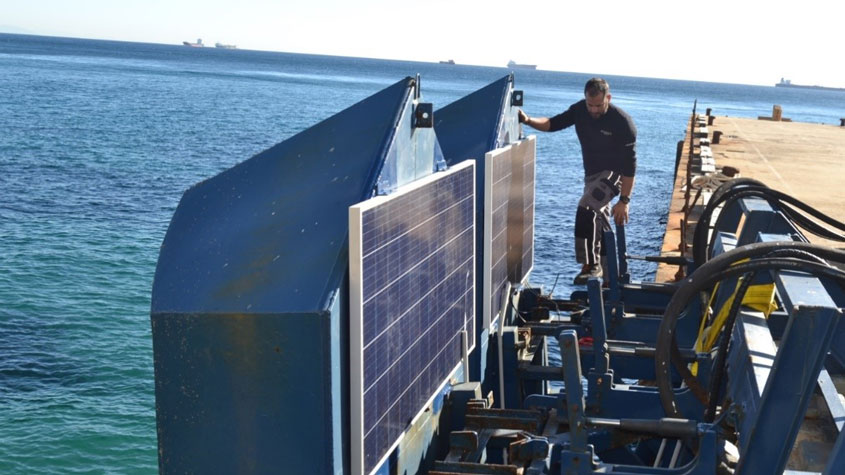
And your ambitions and plans for the future?
I would like to see legislation to support the installation, uptake and use of wave energy, and for governments to set wave energy goals. I would like to see wave energy devices integrated by law into the planning of marine structures. And I would like Eco Wave Power’s technology installed on every suitable marine structure in the world.
The WIPO Magazine is intended to help broaden public understanding of intellectual property and of WIPO’s work, and is not an official document of WIPO. The designations employed and the presentation of material throughout this publication do not imply the expression of any opinion whatsoever on the part of WIPO concerning the legal status of any country, territory or area or of its authorities, or concerning the delimitation of its frontiers or boundaries. This publication is not intended to reflect the views of the Member States or the WIPO Secretariat. The mention of specific companies or products of manufacturers does not imply that they are endorsed or recommended by WIPO in preference to others of a similar nature that are not mentioned.